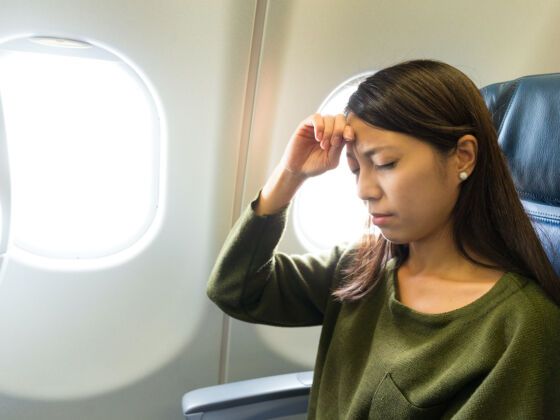I was on my way to London, my hometown, traveling out of New York City. I stood in the terminal looking out at the plane that would carry me home to see my family. I was feeling excited. I boarded the flight, and quickly became antsy. They had yet to turn the engines on, and the crowded air quickly grew stuffy. The young girl next to me attempted to make small talk, but I could only concentrate on the rising temperature. I felt a drop of sweat roll down my forehead, across my eyebrow, and watched as it made a droplet on my jeans.


This journey was nothing new to me; I grew up in a family where my parent’s careers often found us to be passengers on international flights. This time was different. I was carrying baggage that I had never brought on a plane before.
I was carrying anxiety.
I couldn’t comprehend how I could be afraid of nothing.
I plummeted in to full blown panic. It felt like someone taken two fingers, and jabbed me in the chest right above my heart. I was sure I was about to die.
Suffice it to say, I didn’t die. I did however learn some more about anxiety, and also how it affects people traveling. It’s no surprise that people get anxious when taking a trip, but how that anxiety manifests can vary from the smallest of worrying that you’ve forgotten to pack your sunscreen, to utter distress and panic attacks.
Travel anxiety is a widespread issue. When you take a trip, you are removing yourself from your comfort zone. Venturing into unknown situations and places can easily cause discomfort and anxiety. One study suggests that up to 40% of fliers have some form of anxiety related to air travel.
Even the most frequent of fliers can still suffer from travel anxiety. I can still recall a trip from when I was in my teens, sitting next to a woman who told me that she flew back and forth across the US constantly, yet she gripped the arms of her seat with white knuckle fear throughout most of the flight. I wish I understood what she was going through at the time. I didn’t, but looking back it shows me that nobody is immune.
Breathe.
This may seem obvious to most, but when mid-panic this requires focus. Leaving your body to breathe on its own is simply not going to work — you need to control your rate of breathing. I do this by counting the duration of my breaths. I take a breath in, counting the amount of seconds that I know fill my lungs to capacity, and then doing the same count in exhale. This ensures that I’m not taking shallow breaths, which can lead to hyperventilation, and that I am providing my body with enough oxygen for my blood.
I used this method on the aforementioned flight. It’s how I survived. While my fingers started twitching and my chest swelled with pain, I focused on my breathing and it saved me from having to divert the plane. It worked. I had a great trip, and I didn’t let anxiety steal anymore of it.
I flew to London again a few months ago, this time from Washington DC, and used my own advice. I focused on what I knew. I focused on my breathing. I forced the stuffy cabin and the background noise out of my head. I focused on myself.
There was no sweat. There was no urgent desire to escape. It wasn’t easy, but I pushed through it and kept myself calm. It is possible, I did it. I’ll do it again in 2015 when I go home to see my family. And, as always, I won’t let my anxiety highjack my flight.
Today, I still carry my anxiety around with me, as well as the panic. But using the skills that I have learnt throughout my years of suffering, I have largely taken away their strength. I still suffer, and often. The difference now is that I have learned to recognize when the anxiety is about to make an appearance, and for the most part I can either soften the blow, or put myself in a place where I can at least fair the storm. These methods have kept me away from the emergency rooms that I used to frequent so often, and have brought me some peace while dealing with this horrible disorder.